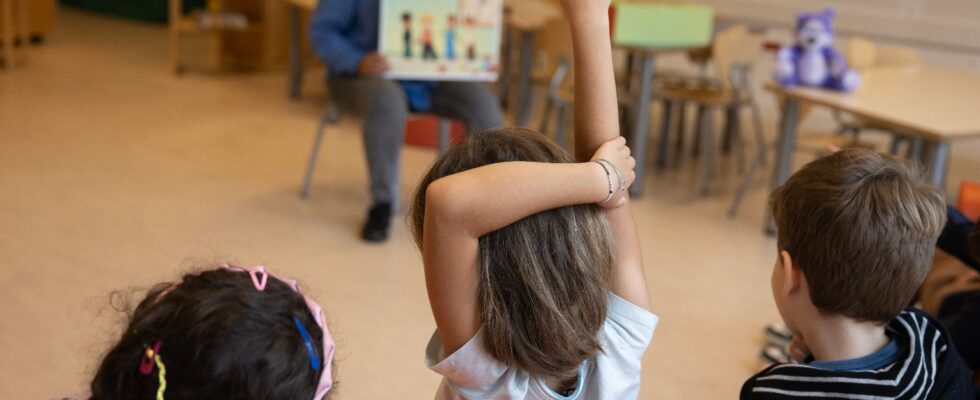In the general opinion, diagnoses of neurodevelopmental disorders (dyslexia, dyspraxia, autism, ADHD, etc.) are constantly increasing. They put teachers and the school system in increasing difficulty, as well as the capacities for taking charge of the disability and health system policy. While some are alarmed and speculate on the causes of this dizzying increase, others on the contrary ironize and believe that it is of a fashion effectan attempt to “Medicize school failure“On the part of the wealthy classes who would prefer to explain the difficulties of their offspring by a medical disorder only by weak skills. What really is?
It is indisputable that The number of diagnoses of neurodevelopmental disorders has continued to progress in recent decades. But that does not imply that the number of individuals concerned has really increased. Children who cannot learn to read or count have always existed. Simply, they were considered idiots, incapable or lazy, relegated to the bottom of the class and quickly evacuated from the school system. The fact that international medical classifications have recognized the existence of specific learning disorders (Since 1975 for the World Health Organization) and have provided official diagnostic criteria has led to increasing recognition of these cases by health professionals.
The broader dissemination of knowledge on these disorders, both in the teaching world and among families, has also led to an increasing demand for such diagnoses. The implementation of inclusion policies for people with disabilities (since 2005 in France) has opened new rights for these children, further accentuating the demand for diagnostics, disability recognition, and associated adaptations or compensation. Add to this that, in some cases such as autism, The diagnostic criteria were deliberately widened (in 2013)mechanically increasing the number of cases detected.
In parallel, none of the hypotheses concerning environmental causes of this supposed increase, whether vaccines, pesticides, pollution, nutrition or the famous “screens” has been scientifically confirmed. Until proven otherwise, there is therefore neither “epidemic”, nor “fashion effect”, but a simple recognition of disorders which were not previously identified as such.
Rational solutions exist
The fact remains that the school is in chronic difficulty to meet the needs of students with learning disabilities. It is torn between contradictory injunctions: should we deal with the completely internal problem, in an educational way, because it is not desirable to “medicalize the academic difficulty”, or else outsourcing the problem as quickly as possible to the medical community ? One of the limits of the medical model is that it is based on diagnoses. However, the diagnostics of learning disabilities, to be reliable, require the observation of a lasting failure of learning to read, writing, or mathematics, which generally repels them at the end of CE1. In other words, when a diagnosis can be made, the student has already undergone two years of failure with all the associated negative consequences and it is already very late to intervene. However, all scientific studies show that the precocity of the intervention is crucial to avoid a student to sink into the spiral of failure.
Faced with these challenges, there is an approach which rationally articulates the respective roles of the educational and the medical, and which has largely demonstrated its effectiveness, in North America but also in Europe and France. These are The “response to intervention” approachwhich is based on a periodic evaluation of students’ progress and a corresponding adaptation of teaching practices. It is available in three levels.
The first is to ensure that the education carried out in the whole class borrows from best practices to allow 80-85 % of students to achieve the programs’ objectives. For the teaching of reading at CP, this consists in using a method based on the development of phonological consciousness, oral vocabulary, and on the explicit, systematic and progressive teaching of the correspondence Phonèmes. After identifying the students remaining in learning difficulty after a few months of such teaching (15-20 %), the teacher offers for these students the second level: a more intensive, more explicit and more systematic teaching, in small group with similar needs. Finally, for a few students who would not respond enough to this differentiated educational intervention, we can offer the third level that calls on other professionals, such as specialized teachers. For the most difficult cases, we can start to envisage in -depth cognitive and language assessments, and a more individualized paramedical remediation based on a precise diagnosis of the pupil’s strengths and weaknesses.
Guides available to teachers
Flexible and pragmatic, the response approach to the intervention therefore prescribed an educational response in first intention, first collective, then increasingly differentiated, only for students who need it. Thanks to regular assessments, it allows you to intervene quickly without delay failure or diagnoses, while reserving the possibility of diagnoses and paramedical interventions in a second step, for only students for which an effective educational response is proven insufficient.
By deferring the use of the health system, this approach avoids hasty and unreliable diagnoses, which can be unnecessarily stigmatizing. It also avoids engorging health professionals – especially speech therapists who are limited – with children who just need a more suitable pedagogy. To identify students need at the different stages, teachers can rely on national assessments -for example those of Mi -CP -, which were designed precisely for this. In order to help teachers appropriate the results of these assessments and use them to set up the educational interventions to level two and three, The Scientific Council for National Education has publishedTuesday, February 11, a note for them.
Franck Ramus, researcher at CNRS and the École Normale Supérieure (Paris)
